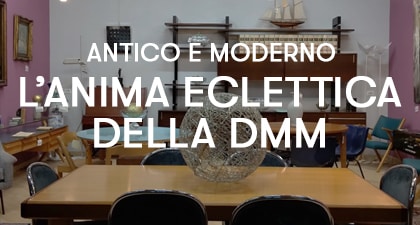
Eighth appointment with Classic Monday dedicated to a sophisticated and elegant piece of furniture protagonist of nineteenth century furniture: the Toilet.
The social and cultural changes that characterize the nineteenth century are also reflected in domestic environments and in the use of spaces; In particular, it is the rise of the bourgeois class and increasing industrialization that determine these changes.

The new client wants functional furniture, suitable for a simpler and more reserved way of life.
In this context, the bedroom is outlined as an intimate and private environment. In addition to the bed, bedside tables, wardrobe and chest of drawers, the rooms are equipped with furniture dedicated to personal care: the toilet and the psyché.
The first toilet tables date back to the eighteenth century; The bedrooms of the ladies of the court and high society were never devoid of these elaborate furniture with drawers and compartments to hold lotions, perfumes and make-up.
Finally, a mirror was placed on the table to allow the lady to sit up, in comfort. It is only in the nineteenth century, however, that this piece of furniture, also known as coiffeuse or petineuse, knows its peak of diffusion.
The toilet protagonist of this study is in late empire style and dates back to the thirties of the 800.

It was made in Genoa, a city very sensitive to the dictates of French fashions, but not only: in fact, at that time the most prestigious workshop was that of the English cabinetmaker Henry Peters. He interpreted the late Empire taste with simplicity of lines and a sober elegance that was found in the English craftsmanship of the time. His furniture was distinguished by the accuracy of the workmanship, technical perfection and impeccable finishes. Around 1835 Peters opened the first furniture workshop in Genoa signing his works with the engraved brand “Peters Maker Genoa”. He was cabinetmaker of the Savoy court and made the furnishings for the Royal Palace of Genoa.

In addition to the refined gilded and richly carved furniture, he continued to design furniture of sober and practical taste with an elegant line and smaller dimensions, aimed mainly at a bourgeois clientele. His success gave new impetus to the production of Genoese furniture that thanks to his impulse reached very high levels in those years.
This toilet fits into that vein: made of mahogany with Bardiglio marble top, it has carvings of extreme finesse. The feral feet and the lion face are so refined and accurate as to seem real; The cornucopias on the sides of the tilting mirror are also of great value. It has a drawer in the band divided into compartments, ideal for storing jewelry and other small accessories.
The advent of running water marked the end of the fortune of this piece of furniture, now considered superfluous and cumbersome.
Although the needs and spaces of the bedrooms have changed a lot over time, the toilet is a piece of furniture whose charm has remained intact.
Thanks to its versatility, it lends itself to furnishing different environments in addition to that of the bedroom, creating a feminine and sophisticated corner.















